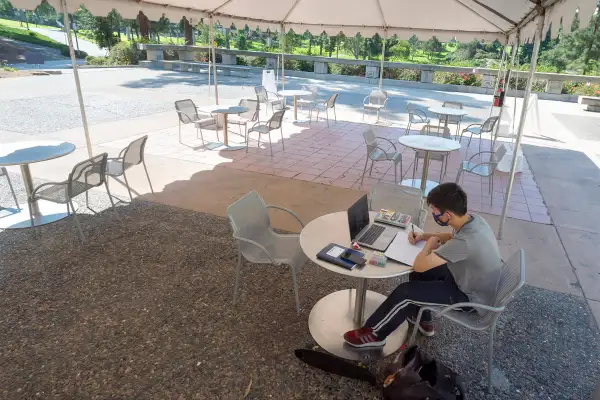Enrollment at Community Colleges Usually Rises During Recessions. This Fall, It Plummeted

After much speculation in the spring and summer about how the pandemic would affect students’ fall enrollment decisions, new data confirms that many first-year students have opted to delay going to college. The number of freshman starting college this fall has declined by 16%, with an even starker drop of nearly 23% at community colleges, according to new data from the National Student Clearinghouse Research Center.
Experts say that enrollment decline causes additional financial strain for institutions that are already struggling with budget shortfalls. And students who take time off from college are less likely to enroll and earn their degrees.
One of the report’s most surprising findings is just how much community college enrollment has dropped. In previous economic downturns, community college enrollment has actually increased as people look to build skills and earn credentials that make them more attractive in the labor market.
“We all have to keep in mind that we're not just talking about a recession right now,” says Dominique Baker, an education professor at Southern Methodist University. “We're talking about a recession in the middle of a pandemic.”
Many community college students might work multiple jobs or have challenges getting sufficient financial aid, which could impact their ability to afford college, she says.
“We've got students who have financial aid awards for the fall that are based off of their 2019 income, which could have drastically shifted for them or someone else in their household,” Baker says. “And if they don't know about the appeals process, or if the appeals process is particularly onerous, then they might not have enough financial aid for the fall.”
Overall undergraduate enrollment is down around 4% compared to the same time last year, with first-year students accounting for almost 70% of the drop, according to the report. Community colleges saw an overall decrease of 9.4% percent, compared to 1.4% and 2.0% at public and private four-year colleges. At those institutions, freshmen enrollment decreased by 13.7% and 11.8%, respectively.
The high number of students choosing not to enroll this fall raises questions about future college completion rates. Research shows that students stopping out increases the likelihood that they will not complete a degree, Baker says.
Still, the decision not to go to college right now is understandable for many students. In the middle of a pandemic, people need to prioritize their basic needs, Baker says.
“People have to make sure that they have enough food and money for housing, and that has to take precedence,” Baker says.
American Indian and Native Alaskan students suffered the sharpest decline of all undergraduate students (-10.7%), followed by Black students (-7.9%), white students (-7.6%), Hispanic students (-6.1%), and Asian students (-4.0%). International students also saw a nearly 14% decline due to visa delays, travel bans, and immigration restrictions.
Baker says that she is particularly concerned about students who live in multigenerational households, who tend to be Black, American Indian, Alaskan Native and Latinx students and who have been disproportionately impacted by the pandemic. “They might have to make different decisions because of who they need to care for in their family or who they're concerned about getting sick,” she says.
Baker adds that there will be a great need for policies and programs that encourage students to complete their degrees if they’ve dropped out. She points to programs in states like Tennessee and Michigan that help students who have already earned credits to re-enroll.
“Colleges, states and the federal government are going to have to make a particular push to find ways to help people come back to college,” she says.
The report tracks with two other recent surveys that paint a dismal picture for undergraduate enrollments: Last week, the American Council on Education found that more than half of colleges surveyed reported enrollment declines, while survey results released Monday by The Chronicle of Higher Education found the number was closer to two-thirds.
While undergraduate enrollment is down, graduate enrollment is up by 2.7%, according to the Clearinghouse report. That trend is consistent with what has happened during previous economic downturns, Baker says.
Baker says that people who already have bachelor’s degrees are concerned about the possibility of losing their jobs or trying to find a new job in the middle of a pandemic. “They are trying to get an additional credential in order to make them more viable in the labor market,” she says.
The analysis was based on enrollment data reported to the National Student Clearinghouse by 54% of colleges and universities at the end of September and represents 9.2 million students.
More from Money:
Is Going to Grad School a Good Financial Decision During a Recession?
Are Student Loans Still Paused? Here's What Borrowers Should Know for the Rest of 2020